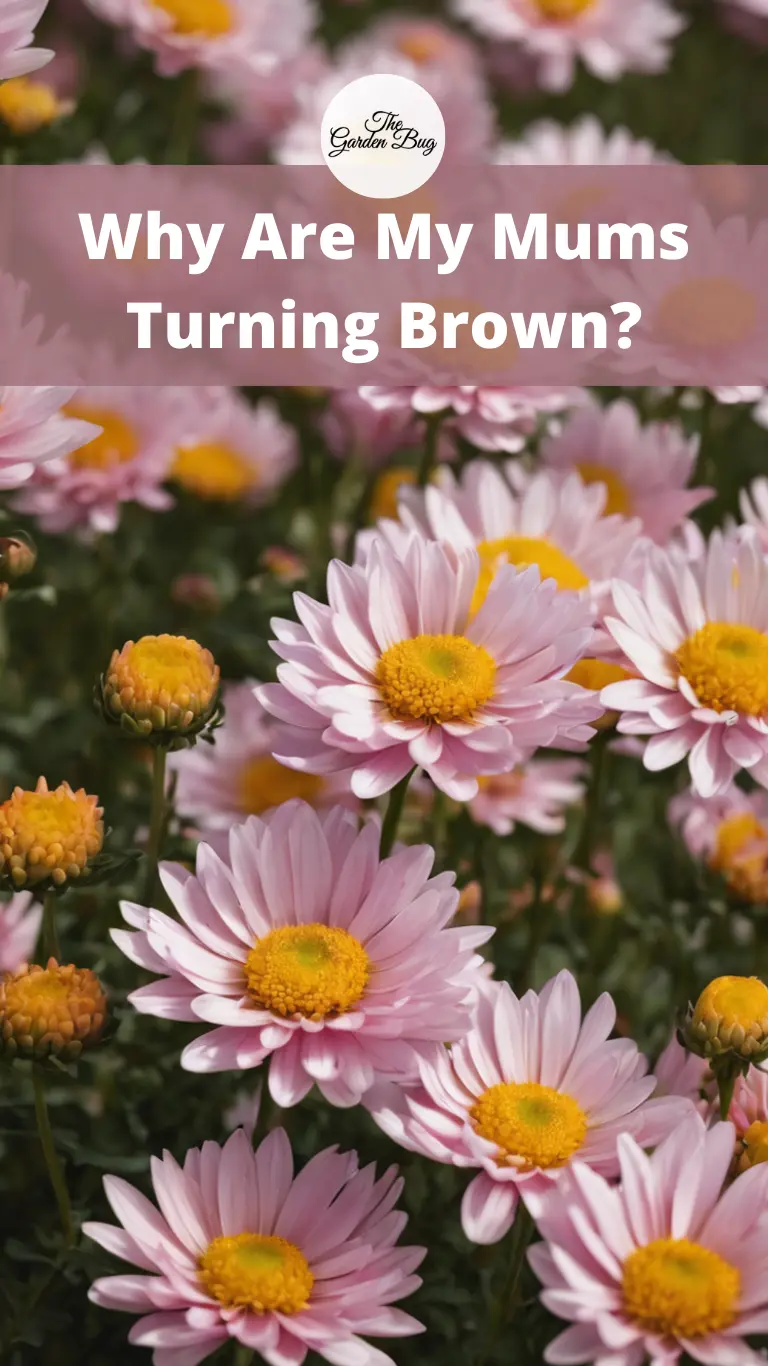Imagine a garden filled with vibrant mums, their stunning blooms adding bursts of color to the landscape. These resilient flowers, also known as chrysanthemums, have captured the hearts of gardeners and flower enthusiasts alike. However, when you notice that your once lush and beautiful mums are turning brown, it can leave you feeling puzzled and concerned.
In this article, we’ll delve into the world of browning mums, seeking to uncover the reasons behind this phenomenon. We’ll explore the potential causes, ranging from issues with watering to disease, pests, environmental factors, and cultural practices. Understanding these factors will empower you to address the problem and restore your mums to their former glory.
So, let’s embark on a journey to unravel the mystery of why your mums are turning brown. Together, we’ll uncover the secrets behind this color change and equip you with the knowledge to take appropriate action. Get ready to revive the beauty of your mums and bring back their vibrant colors to your garden.
- Not for Sale To : AL,AR,DC,IN,KY,ME,MI,MT,NM,SD,TN,VA,VT,WV,AK,HI,PR,CA
Lack of Water
Have you ever felt parched and thirsty on a scorching hot day? Well, mums can feel the same way! One possible reason why your mums are turning brown is a lack of water. These flowers need a consistent supply of moisture to stay healthy and vibrant. If the soil around your mums becomes too dry, their leaves and petals may start to wither and turn brown. So, make sure to water your mums regularly, keeping the soil moist but not waterlogged. Give them a good drink when the top inch of soil feels dry, and watch as they perk up and regain their beautiful colors.
Disease and Fungal Infections
Sometimes, even plants can fall victim to pesky diseases and fungal infections. Mums are no exception. Conditions like powdery mildew, botrytis blight, or rust can cause browning in the leaves and flowers of mums. If you notice spots, discoloration, wilting, or mold growth, it’s a sign that your mums may be under attack. Don’t worry, though! By promptly identifying and treating these infections with appropriate fungicides or by removing affected plant parts, you can help your mums fight back and regain their healthy appearance.
By understanding the impact of water and the presence of diseases and fungal infections, you’re one step closer to solving the mystery of why your mums are turning brown. With proper watering and vigilant care, you can revitalize your mums and once again enjoy their vibrant colors in your garden. Stay tuned as we uncover more reasons and solutions to this browning phenomenon!
Pests
In the enchanting world of mums, even unwelcome visitors can make an appearance. Pests like aphids, mites, or caterpillars might be the reason behind your browning mums. These tiny troublemakers can feast on the leaves and flowers, causing them to turn brown and wilt. If you spot any signs of pests, such as small crawling insects or chewed foliage, it’s time to take action. You can use insecticidal soaps, natural predators, or manual removal to keep these pests at bay. By giving your mums a pest-free environment, you’ll help them regain their natural beauty.
Environmental Factors
Just like us, mums are affected by their surroundings. Environmental factors can play a role in their browning. Extreme heat, chilly temperatures, or sudden temperature fluctuations can stress the plants, leading to browned foliage. Additionally, too much sunlight or insufficient light can also affect the health of mums. They prefer a balanced amount of sunlight to thrive. So, if your mums are turning brown, it’s worth considering whether they are receiving the right amount of light and if they are protected from extreme weather conditions. Finding the right balance will help your mums regain their vitality and vibrant hues.
By uncovering the impact of pests and environmental factors, you’re getting closer to solving the mystery of your browning mums. Stay with us as we explore more reasons behind this issue and provide you with solutions to restore the beauty of your beloved flowers. Together, we’ll bring back the vibrancy and charm to your mum-filled garden!
Cultural Practices
In the captivating world of gardening, sometimes the way we care for our plants can unintentionally lead to browning mums. Cultural practices play a role in their overall health and appearance. Issues such as overcrowding, poor soil conditions, or incorrect pruning techniques can contribute to browning. When mums are overcrowded, they may struggle to access nutrients and air circulation, resulting in browning leaves. Similarly, if the soil lacks essential nutrients or proper drainage, it can affect the overall health of the plants. Pruning mums incorrectly or at the wrong time can disrupt their growth patterns and lead to browning. By practicing proper cultural techniques, such as providing adequate spacing, enriching the soil, and understanding the optimal pruning methods, you can help your mums thrive and keep browning at bay.
Conclusion
Now that we’ve explored various factors behind browning mums, we’ve uncovered a multitude of reasons why your beloved flowers might be losing their luster. From lack of water to disease, pests, environmental factors, and cultural practices, each aspect plays a role in the health and appearance of your mums.
Remember, you’re not alone in this journey. By identifying the cause behind the browning and taking appropriate action, you can revive your mums and bring back their radiant colors. Ensure your mums receive adequate water, protect them from diseases and pests, provide a suitable environment with proper lighting, and follow best cultural practices.
With patience, care, and a bit of detective work, you can restore the beauty of your mums and once again enjoy their splendid blooms. Gardening is an ever-evolving adventure, and your dedication will be rewarded with vibrant, healthy mums that bring joy and enchantment to your garden.
So, don’t lose hope if your mums are turning brown. Embrace the challenge, apply the knowledge you’ve gained, and let the revitalization of your mums become a testament to your gardening prowess. Happy gardening, and may your mums flourish with radiant hues once more!





